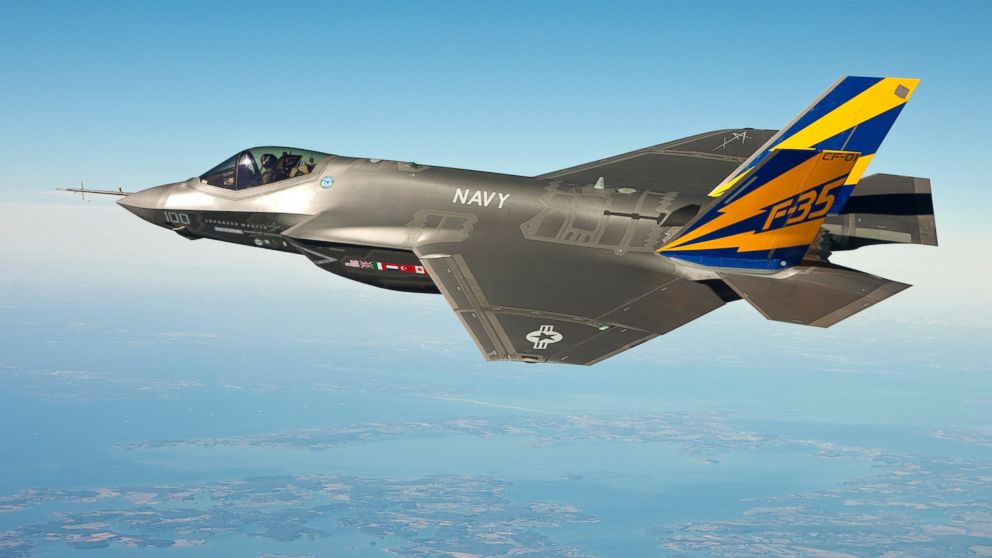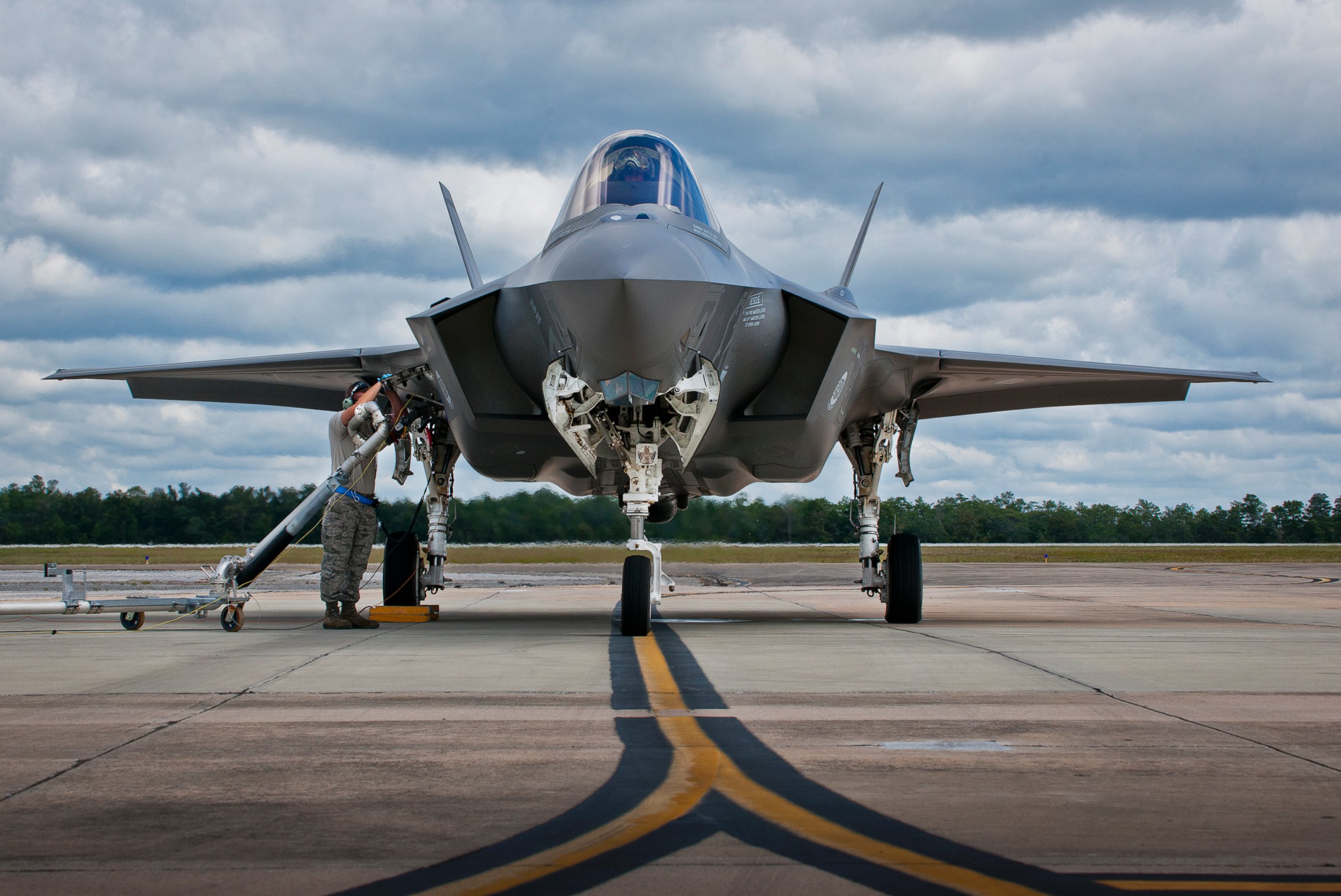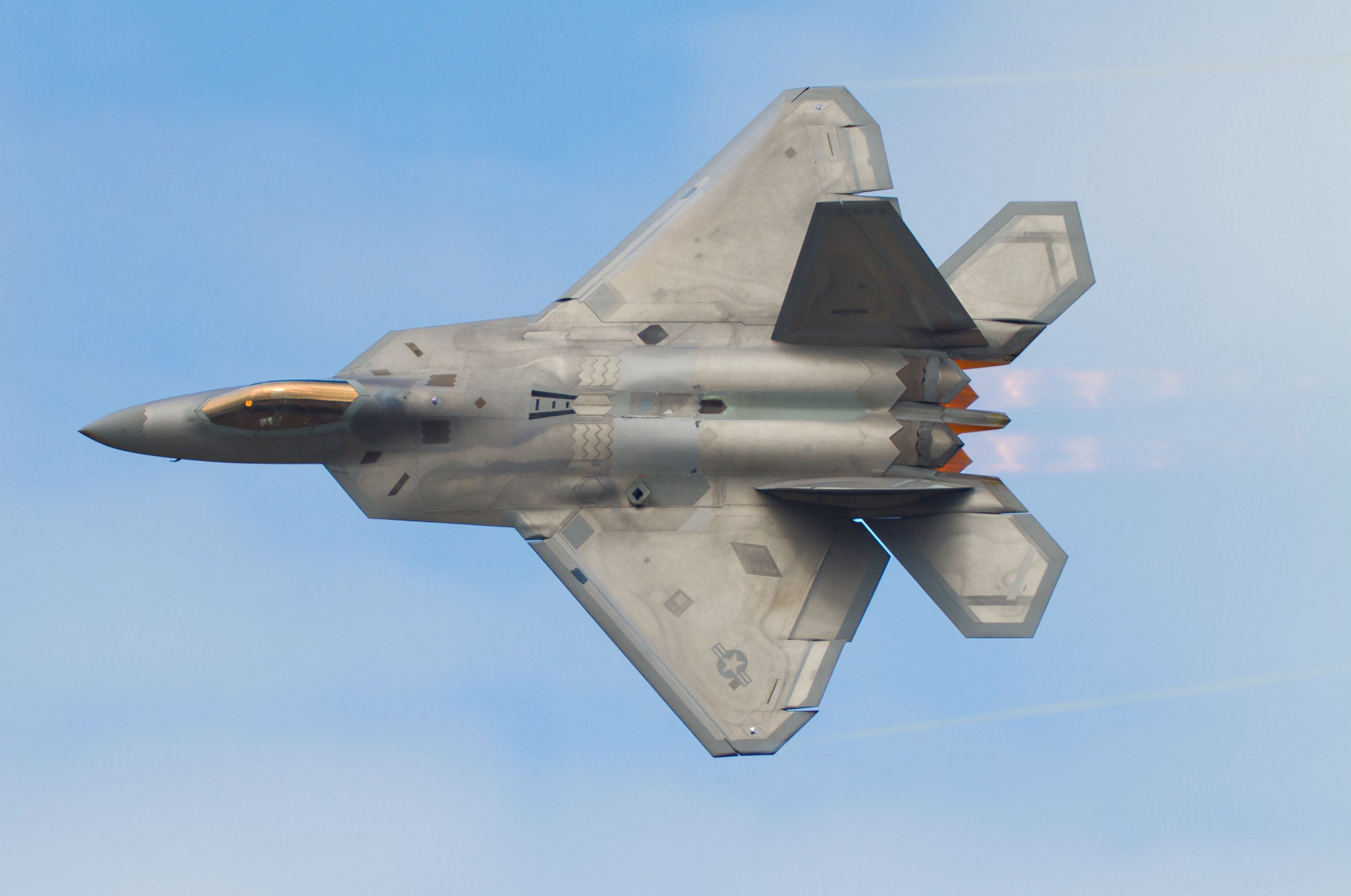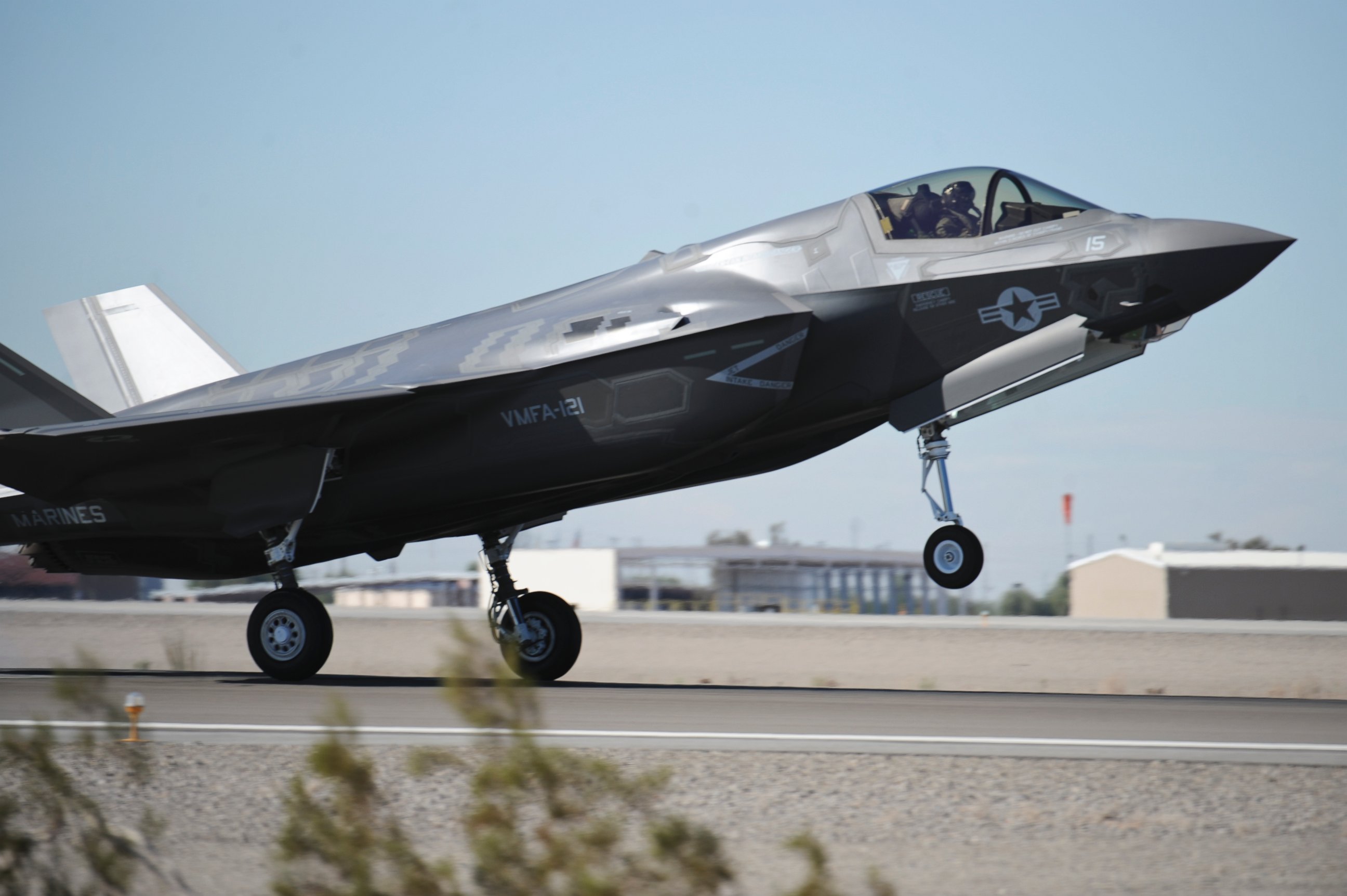Military: Don't Worry If F-35, Most Expensive Fighter Jet Ever, Can't Dogfight Well
Pentagon responds to damning test pilot report.

— -- The makers of one of the most expensive weapons programs in history went on the defensive today, saying a recent report on the F-35 fighter jet’s failures in old-school dogfighting against a decades-old, much cheaper legacy fighter “does not tell the whole story.”
The report in question, posted on the national security news website War Is Boring, was based on an internal five-page brief in which an F-35 test pilot wrote a scathing criticism of the next-generation jet’s abilities in a January dogfight with an F-16, one of the planes the F-35 is designed to replace. Essentially, the pilot reportedly wrote, the F-35 was no match for the F-16 in close-up, high maneuvering fighting -- whether the F-35 was trying to get the F-16 in its sights or trying to evade the F-16’s mock weapons.
“The F-35 was at a distinct energy disadvantage,” the test pilot reportedly wrote. “There were not compelling reasons to fight in this region.”
This morning the Pentagon’s F-35 Program Office did what the actual $138 million jet apparently couldn't: fight back.

In an email to reporters, Joe DellaVedova, a spokesperson for the F-35 office, attempted to provide context in defense of the fighter jets. First, DellaVedova wrote, the F-35 in the demonstration was only designed for “flight sciences” and was “not equipped with a number of items” that the jets currently coming off the production line have. For instance, it didn’t have the sensors that “allow the F-35 to see its enemy long before it knows the F-35 is in the area.”
He said that the Lockheed Martin-made F-35 didn’t have the stealth coating that regular F-35s have, making them “virtually invisible to radar,” and the test jet wasn’t equipped with “the weapons or software that allow the F-35 to turn, aim a weapon with the helmet, and fire at an enemy without having to point the airplane at its target.” (According to War Is Boring, the test pilot complained the size of the helmet made it too hard to see behind the plane.)
But none of DellaVedova’s comments directly address the central claim in the War Is Boring report -– that the plane isn’t good at maneuvering in close-up dogfighting –- likely because DellaVedova said it isn’t really designed to be.
“The F-35’s technology is designed to engage, shoot and kill its enemy from long distances, not necessarily in visual ‘dogfighting’ situations,” he said.
The F-35 is also primarily designed to attack targets on the ground. It’s the duty of the F-35’s next-generation counterpart, the F-22 Raptor – which had its own share of dogfighting difficulties – to take on other fighter jets in the air.

Still, DellaVedova said in a follow-up email to ABC News that the test pilot’s report is “the beginning of what engineers and software designers may need to address in the future.”
“As the F-35 is still in the midst of the System Development and Demonstration (SDD) phase, much work is on-going to improve the capabilities and deliver them to the warfighter,” DellaVedova said. “The F-35 of today is not what the F-35 will be in the coming years.”
The F-35 is one of the most expensive weapons programs in history, with each jet costing around $138 million and the entire program running up to $339 billion – well over an estimated $1 trillion in operational costs over the next 50 years. It’s also woefully behind schedule; the first planes were supposed to have gone operational three years ago.
Despite DellaVedova’s comment about intense testing still being done, the Marine Corps, one of the F-35’s customers, expects to field its first aircraft this summer.
ABC News requested additional context about the F-35’s dogfighting capabilities in the form of the For Official Use Only (FOUO) report on which the War Is Boring report was based. DellaVedova declined.
This afternoon, War Is Boring posted online what it says is a full copy of the test pilot’s report.





